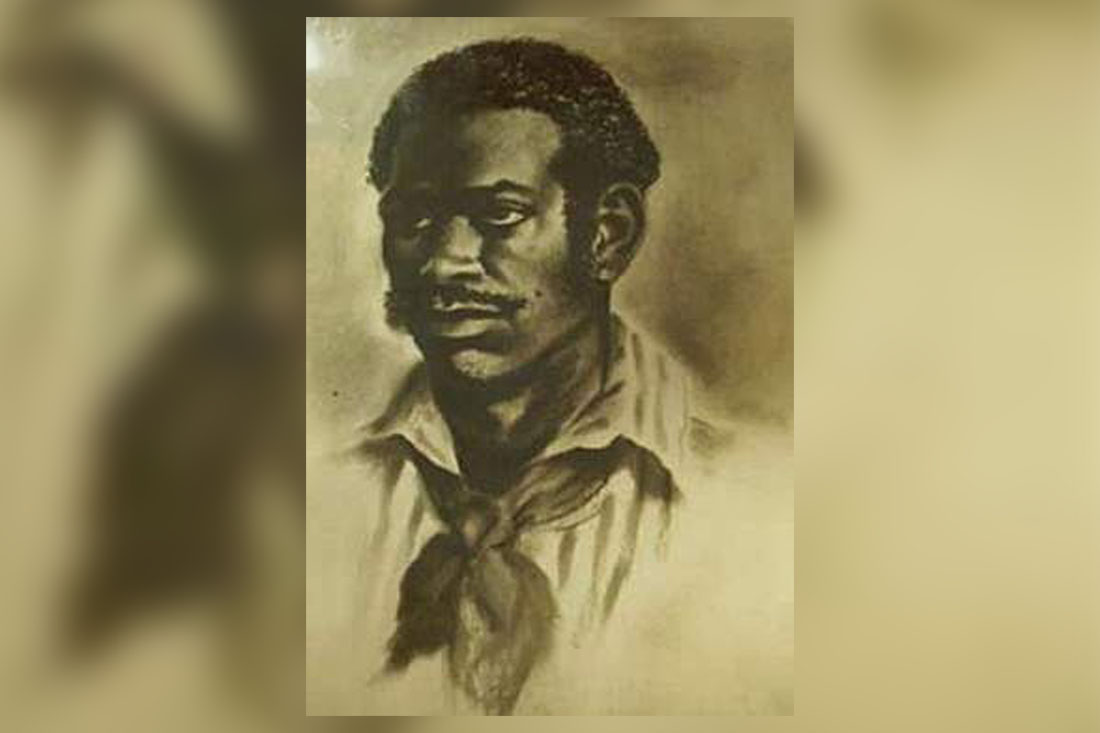On the morning of January 29th, 1812 at 6:00 in the morning in the Plaza de Armas, today Agramonte Park, the eight leaders of the Aponte rebellion in Camagüey were hanged: José Miguel González (Mandingo), Calixto Gutiérrez, Pedro Manuel, Pablo, Nicolás Montalbán (Mandingo), Fermín Rabelo (Carabalí), Bartolomé (Mandingo), José (Congo).
Complainants: Rafael Medrano (brown) and Francisco Adán. 677 reales were collected for his manumission for his services. Describes the Chapter Act:
En este cavdo el Sor. Presidte dijo: Que dos vecinos quales son el Capn. D. Domingo de Piña y D. Luís Loret de Mola se le presentaron a impartirle su benia p ͣ abrir una subscripsión voluntaria entre los demás de esta v ͣ p ͣ recolectar lo suficiente a manumitir al pardo Rafael Medrano y Francisco Adan, denunciantes de José Miguel Gonzáles Y Calixto Gutiérrez motores de la insubreción que han originado los negros esclavos p ͣ invadir al pueblo con objeto de conseguir su libertad a la fuerza…
Things omitted until today
José Martí outlined a question about the Aponte Conspiracy, however, the truth is that in the avenue of Cuban social thought, this social movement is still not socialized as an action with a national profile resulting from a political will systematized for years.
José Martí warned:
What was known about the black conspirator Aponte, who died in 1812, with eight of his companions?
He lived on Jesús Peregrino Street. He answered.
A hidden royal lineage
About the interrogation that Mr. José María Nerey made to José Antonio for five days, around eight hours a day, it was recorded that his Book of paintings ꟷstill lostꟷ had 72 pages, among other texts that from intertextuality provided a disruptive interpretation of the universe in a counter-hegemonic, liberating, decolonial way.
Aponte said that six years ago he had written the book with the aim of presenting it to the City Council. He explained in his defense.
The truth is that, when answering to the interrogation, he camouflaged his true intentions. Since then, he was preparing the rebellion. His text was his political platform with which he instructed his disciples. He managed to interconnect followers with a national reach, prepared their intellect, emotions, raised their self-esteem and indoctrinated them about their hidden royal lineages.
Africa in the Bible, Apontine vision
Aponte on answering the question: he could explain in detail all the figures he includes; He replied that: The Print represents the Eternal Father, in other words, it recreates the Bible from Genesis to Revelation. He emphasized not only the days of creation but distinguished the presence of the African river Nile, natural black knights from Abyssinia, the Queen of Ethiopia, Queen Candace, the conversation of Philip, the deacon with the Ethiopian eunuch. He drew Miguelet, the son of the African Queen, the Ethiopian Saba and the Jewish King Solomon.
Currently this lineage is linked to the Rastafari movement, including the flag, the image of the lion, the cross and the color yellow. He also represented a brown apostle: Abalseo and the Abyssinian flag of Queen Candace, previously mentioned.
So much for context! He drilled deep into the ideological conceptions of his listeners, he put in doubt the science of the moment that systematized the mental disability of the black, he stood at the gap of exclusion and social exploitation and at the crossroads of the non-history of the man brought from Africa.
His first crime: Thinking!
José Antonio Aponte taught his followers, free and enslaved, humiliated all, who had learned from their master his not totally human nature, that their heritage was linked to the same Holy Book from the beginning. As kings as Solomon and David, their land there also incorporated, the African woman there was distinguished and leader, the insignia and legacy.
Present-day
The Aponte Commission of the Union of Writers and Artists of Cuba (UNEAC) leads the commemoration of the 210th anniversary of the rebellion of José Antonio Aponte, with the noble purpose of making visible and confronting racial discrimination, vocation of committed Cuban creators with social justice.
Every January 29th in the morning, the town of Agramonte pays tribute to Aponte with a floral offering in the commemorative plaque in the main park of the city, the first in the country.
Bibliography
Actas Capitulares de Puerto Príncipe, 1811-1812.
Martí, José (2011) Obras Completas, Editorial Ciencias Sociales
Pavés, Jorge, (2006) “Expediente sobre José Antonio Aponte y el sentido de las pinturas que se hayan en el Libro que se le aprehendió en su casa, 1812” en Anales de Desclasificación / La derrota del área cultural n° 2 / Vol. 1. Pp. 717- 768.
Translated by: Aileen Álvarez García







